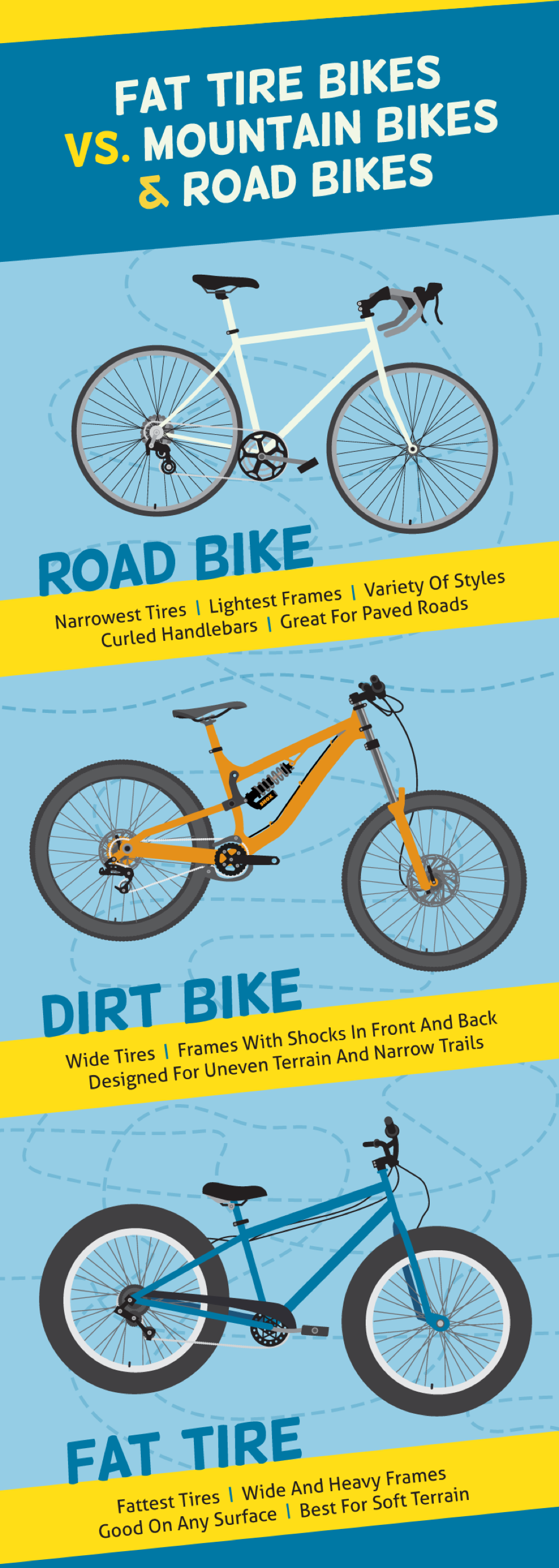Whether you’re a seasoned mountain biker or have never been on a bike outside of spin class, it’s time to take a closer look at fat-tire bikes: their versatility and soft ride make them the perfect all-around bike or specialty cycle.

Fat-tire bikes are precisely what their name says they are: bikes with really fat tires. If you’ve never seen one, the first viewing is often a little astonishing. They look a lot like a children’s bike that’s been enlarged for adult use. Or like a bike with tires made of black marshmallows. Despite their unorthodox appearance, fat bikes are here to stay. The date of the creation of the first fat-tire bike is both mildly contested and difficult to pin down, but in their current iteration, fat bikes have been available for about a decade and their popularity is soaring.
The fatness of the tire makes these bikes what they are. Most have a tire that’s at least 4 inches wide, which is roughly twice the width of a standard mountain bike tire and nearly four times as wide as a road bike tire. In addition to their increased tire width, fat-tire bikes are designed to operate with much lower tire pressure. Measured in pounds per square inch, most mountain bikes require a tire pressure somewhere between 35 and 70 psi, while most car tires operate best between 30 and 35 psi. With a fat-tire bike, you’re looking at somewhere between 10 and 20 psi, and often even lower. The low tire pressure further increases the surface area of tire and helps keep these bikes aloft on soft surfaces.
It’s similar to the difference between walking through snow with just boots, where each step causes you to sink through the soft surface, versus walking on the same snow in snow shoes, which spread the weight over a larger area and remain on the snow’s surface. Because of the tire’s width and low pressure, it’s possible to ride a fat bike on snow, across sand, and even through bogs.
One of the obvious perks of a fat bike is the ability to cycle through new terrain and unique conditions.
Before fat bikes, certain conditions, like snow and sand, where off-limits for cyclists. Winter often meant the end of mountain biking season because it wasn’t feasible to pedal through snow. With a fat bike, winter is simply an extension of the season and can be the time of year to look forward to because new areas become accessible. Trails that are groomed for Nordic skiers are often open to fat bikes. Entire networks of new trails open in the winter, from trails that are groomed for Nordic skiers to new approaches to your favorite single track. Adventurous cyclists have taken fat bikes on glaciers, both snow-covered and bare. You can pedal across the beach. There’s even a new series of fat bike races and events popping up across the country as the sport gains popularity.

This Retro WON first appeared July 14, 2017.
The Women's Outdoor News, aka The WON, features news, reviews and stories about women who are shooting, hunting, fishing and actively engaging in outdoor adventure. This publication is for women, by women. View all posts by The WON